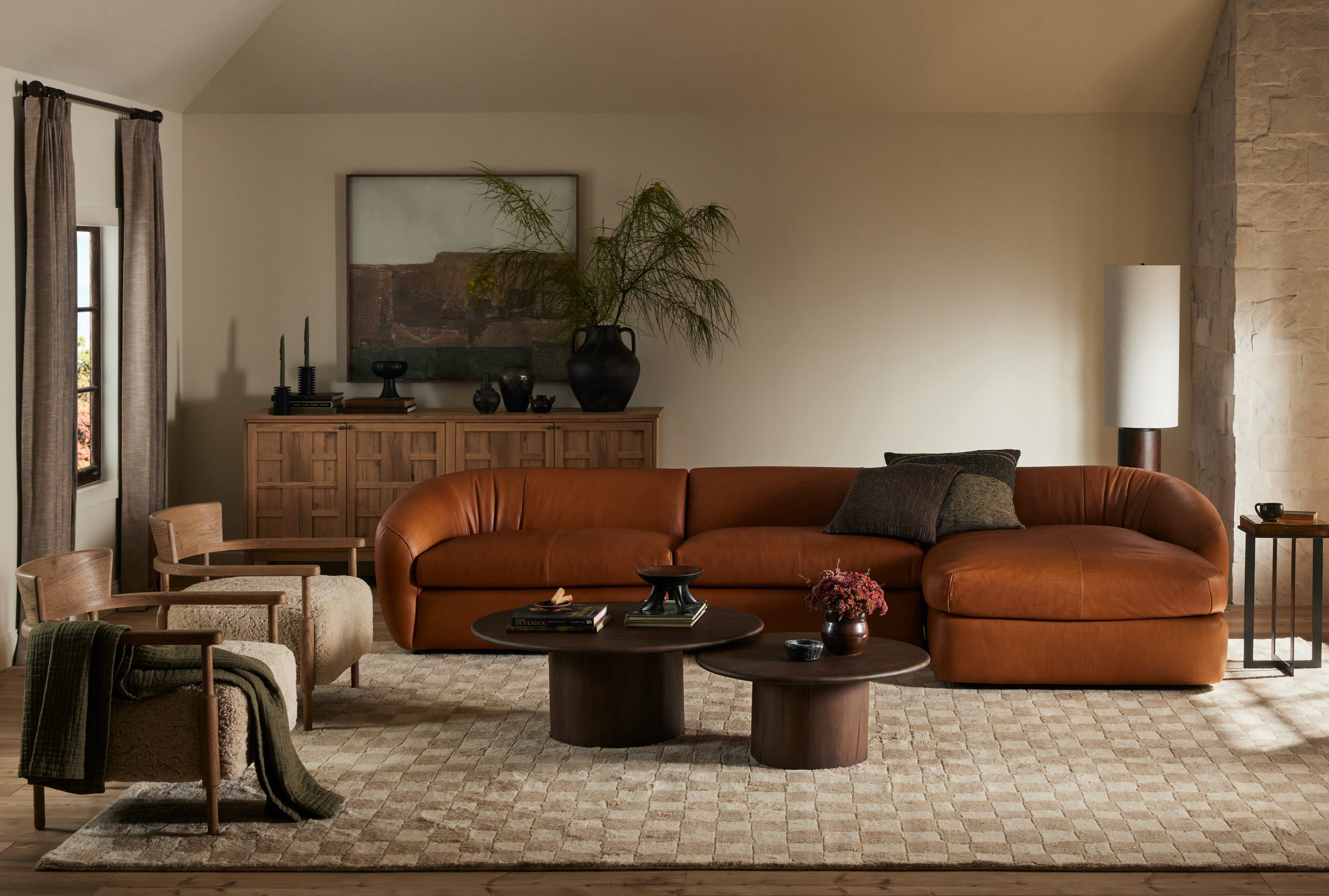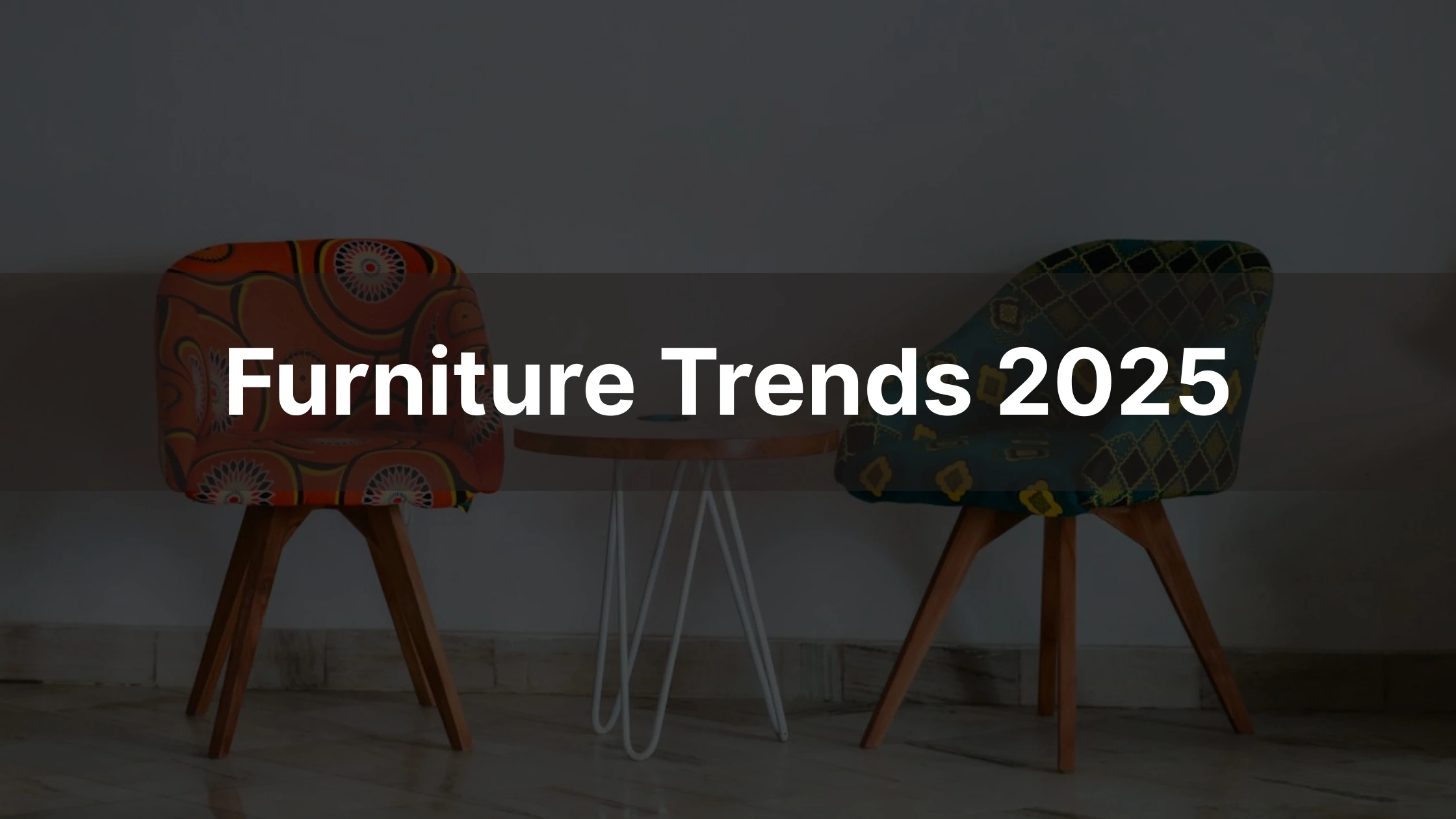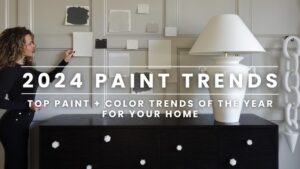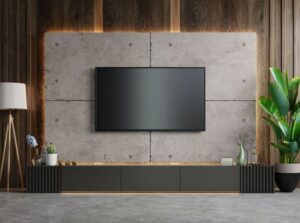The world of furniture design keeps evolving. By 2025, exciting new trends will emerge.
As we approach 2025, furniture trends are set to change our living spaces. Designers predict a blend of innovation and tradition. Expect a mix of sustainable materials and smart technology. The focus will be on comfort and functionality. Homeowners will seek pieces that offer more than just aesthetic appeal.
Multi-purpose furniture will grow in popularity. This shift reflects our changing lifestyles and environmental concerns. The goal is to create spaces that are both beautiful and practical. Stay tuned as we explore the key furniture trends shaping 2025. Discover how these trends can transform your home and enhance your living experience.

Credit: www.houzz.com
Sustainable Materials
As we look forward to 2025, the world of furniture design is taking a significant turn towards sustainability. Consumers are becoming more conscious of their choices, seeking eco-friendly and sustainable materials for their homes. This shift is not only benefiting the environment but also creating a new wave of modern aesthetics in interior decor. Let’s explore some of the key trends in sustainable materials that are shaping the future of furniture design.
Eco-friendly Choices
Eco-friendly choices are at the forefront of furniture trends for 2025. Homeowners are increasingly opting for furniture made from sustainable materials that minimize environmental impact. This trend is not just a passing phase but a conscious shift towards a greener lifestyle. Here are some eco-friendly choices you can consider for your home:
- Bamboo: Bamboo grows quickly and regenerates without the need for replanting. It is durable and adds a natural touch to any space.
- Reclaimed Wood: This wood is salvaged from old buildings or furniture. It reduces the need for new timber and adds a unique, rustic charm to your home.
- Cork: Harvested from the bark of cork oak trees, cork is renewable and biodegradable. It is also hypoallergenic and resistant to fire.
Furniture made from these materials not only supports sustainable practices but also enhances the aesthetic appeal of your interior decor. The natural textures and colors of these materials blend seamlessly with modern aesthetics, creating a harmonious and inviting atmosphere.
Moreover, using sustainable materials often means supporting artisanal craftsmanship. Many eco-friendly furniture pieces are handcrafted, ensuring high quality and unique designs. This commitment to craftsmanship adds value and longevity to the furniture, making it a worthy investment for your home.
Recycled Components
In the realm of sustainable materials, recycled components are playing a crucial role. Upcycled furniture, which involves repurposing old materials into new creations, is becoming increasingly popular. This practice not only reduces waste but also promotes creativity and innovation in furniture design.
Some common recycled components used in furniture include:
| Component | Description |
|---|---|
| Recycled Plastic | Plastic waste is transformed into durable and versatile furniture pieces. This helps reduce the amount of plastic in landfills. |
| Metal Scraps | Old metal parts are melted down and reshaped into new furniture components. This practice is both eco-friendly and cost-effective. |
| Fabric Scraps | Leftover fabric from various industries is repurposed to create upholstery for furniture. This reduces textile waste significantly. |
Integrating recycled components into furniture not only supports sustainable living but also brings a unique touch to your home. Each piece of upcycled furniture has its own story and character, making it a distinctive addition to your interior decor.
The use of recycled components also aligns with the minimalist style and biophilic design trends. These designs emphasize simplicity, functionality, and a connection to nature. Furniture made from recycled materials often features clean lines and natural colors, fitting perfectly into minimalist and biophilic spaces.
By choosing furniture with recycled components, you are contributing to a more sustainable future. You are also embracing a modern and innovative approach to interior decor, where creativity and sustainability go hand in hand.
Minimalist Designs
Furniture trends for 2025 embrace simplicity and elegance. Minimalist designs are at the forefront, reflecting a shift towards a clutter-free lifestyle. With an emphasis on functionality and aesthetics, minimalist furniture pieces transform living spaces into serene retreats. This design philosophy focuses on stripping away the unnecessary, offering refined and modern aesthetics. Home decor trends favor clean, uncluttered spaces, ensuring every piece serves a purpose while enhancing beauty.
Clean Lines
Minimalist furniture stands out with its clean lines. These lines create a sense of order and calm, which is essential in modern aesthetics. The appeal of simple shapes and structures lies in their ability to blend seamlessly into any space. Minimalist furniture often features geometric forms, contributing to a sleek appearance.
Key attributes of clean lines in furniture design include:
- Straight edges and flat surfaces
- Simple geometric shapes
- Less ornamentation
The use of sustainable materials further enhances these designs, promoting environmental consciousness. A table showcasing popular materials in minimalist furniture:
| Material | Benefit |
|---|---|
| Bamboo | Eco-friendly and durable |
| Metal | Strong and versatile |
| Glass | Elegant and light-enhancing |
Clean lines contribute to space optimization, making rooms appear larger and more welcoming. They also play a crucial role in open-concept living, where each area flows naturally into the next.
Functional Spaces
Functional spaces are a cornerstone of minimalist designs. In 2025, homeowners seek furniture that maximizes utility without sacrificing style. Multifunctional furniture meets this demand, offering items that serve multiple purposes. Examples include sofa beds, extendable tables, and storage ottomans.
Consider the benefits of functional spaces:
- Space optimization for small apartments
- Improved ergonomic design for comfort
- Adaptable layouts for changing needs
Color palettes in minimalist designs typically feature neutral tones. These colors enhance the feeling of spaciousness and tranquility. Popular shades include white, beige, and gray.
Functional spaces rely on strategic furniture placement. This ensures smooth flow and easy access throughout the home. Open-concept living thrives on such layouts, fostering a sense of community and interaction.
As home decor trends evolve, minimalist furniture remains a favorite. Its ability to transform spaces into peaceful havens makes it a timeless choice for any homeowner.
Bold Colors
Furniture trends in 2025 are all about making bold statements. One of the most exciting trends is the use of bold colors. These vibrant hues can transform a room, creating a space that is both modern and inviting. Bold colors allow you to express your personality and make your home decor truly unique. They work well with various interior design styles, from minimalist to eclectic design. Let’s dive into some of the ways to incorporate bold colors in your furniture.
Vibrant Accents
Using vibrant accents in your home decor is an excellent way to embrace bold colors. These accents can be incorporated through various elements such as:
- Accent chairs
- Throw pillows
- Rugs
- Artwork
- Lamps
Consider a vibrant red accent chair in a living room with neutral tones. This not only adds a pop of color but also serves as a statement piece. Similarly, colorful throw pillows can brighten up a sofa, making the space feel more lively.
Another way to add vibrant accents is through texture layering. Combining different textures and colors can create depth and interest in a room. For instance, a blue velvet pillow paired with a yellow knit throw can add both color and texture, enhancing the room’s overall aesthetic.
Tables are also a great way to introduce bold colors. A coffee table with a bright, lacquered finish can be a focal point in a living room. Here’s a quick example:
| Item | Color |
|---|---|
| Accent Chair | Bright Red |
| Throw Pillows | Various Colors |
| Coffee Table | Glossy Blue |
Incorporating these vibrant accents can transform your space, making it more dynamic and engaging.
Color Pairing Techniques
Choosing the right color pairs is crucial for a cohesive look. Start with a main color and then select complementary colors to enhance the overall design. Here are some effective color pairing techniques:
- Contrast: Pairing opposite colors on the color wheel creates a striking effect. For example, blue and orange.
- Analogous: Using colors next to each other on the color wheel. This creates a harmonious look. For instance, green, blue-green, and blue.
- Monochromatic: Different shades of the same color. This adds depth without overwhelming the space.
Understanding color psychology can also help in choosing the right pairs. Colors can influence mood. Blue is calming, yellow is cheerful, and red is energizing. Using these principles can help create the desired atmosphere in a room.
In modern aesthetics, pairing bold colors with neutral tones works well. A bright yellow sofa in a room with white walls and grey furniture can create a balanced yet vibrant look. Here’s an example of color pairing:
| Main Color | Complementary Colors |
|---|---|
| Blue | Orange, White |
| Green | Yellow, Beige |
| Red | Grey, Black |
Finally, consider multifunctional furniture with bold colors. These pieces save space and add style. For example, a bold-colored storage ottoman can serve as both seating and storage.
By using these color pairing techniques, you can create a cohesive and visually appealing space that reflects your personal style.
Smart Furniture
Furniture Trends 2025 are set to embrace a new era of design and functionality, with Smart Furniture leading the charge. This forward-thinking trend combines technology with traditional furniture, offering innovative solutions for modern living spaces. As homes become more connected, the demand for furniture that integrates seamlessly with Smart Home Technology increases. This evolution is not just about aesthetics; it’s about creating furniture that makes life easier, more efficient, and more comfortable. With an emphasis on sustainability and minimalism, Smart Furniture is not only stylish but also Eco-Friendly, making it a perfect fit for the environmentally conscious consumer.
Tech Integration
Tech Integration is a key feature of Smart Furniture in 2025. Homeowners seek furniture that interacts with their digital lifestyle effortlessly. Imagine a coffee table that charges your devices wirelessly. Or a sofa with built-in speakers for an immersive audio experience. These are not just concepts; they are realities shaping Furniture Design today.
Many pieces now come equipped with smart features:
- Voice-activated controls: Adjust lighting or play music with just a command.
- Smart sensors: Automatic adjustments for optimal Ergonomic Furniture positioning.
- Integrated displays: Access weather updates or news without leaving your seat.
A table summarizing some popular tech-integrated furniture might look like this:
| Furniture Type | Tech Feature |
|---|---|
| Desk | Wireless charging pads |
| Bedside Table | Built-in speakers |
| Chair | Posture correction sensors |
This seamless Tech Integration not only enhances the functionality of furniture but also supports the trend of Space-Saving Furniture. By combining technology with everyday items, homes can remain clutter-free and efficient.
Multifunctional Pieces
Multifunctional Pieces are gaining popularity as they maximize utility and minimize space usage. With many people working from home, the need for versatile Home Office Furniture has grown. These pieces are designed to adapt to different needs throughout the day.
Consider these popular multifunctional designs:
- Sofa beds: A comfortable seat by day, a cozy bed by night.
- Extendable tables: Perfect for dining or working, expanding as needed.
- Foldable desks: Easily stored when not in use, freeing up space.
Here’s a quick look at how Multifunctional Pieces can transform your space:
| Room Type | Recommended Furniture |
|---|---|
| Living Room | Convertible sofa |
| Bedroom | Foldable desk |
| Kitchen | Extendable dining table |
These designs are often aligned with Minimalist Decor, focusing on simplicity and functionality. Many pieces incorporate Eco-Friendly Materials, supporting the trend towards Sustainable Furniture. Multifunctional Pieces also cater to the Vintage Revival trend, offering classic designs with modern versatility.
Smart Furniture in 2025 combines technology and flexibility, aligning with evolving lifestyle needs and Color Trends. This makes it an essential part of modern living.
Vintage Revival
As we look ahead to Furniture Trends 2025, the concept of a ‘Vintage Revival’ takes center stage. This trend embraces the charm of the past while merging it with modern sensibilities. The allure lies in its ability to blend old-world elegance with contemporary styles. Vintage furniture pieces are not just about nostalgia; they offer unique character and a story that modern counterparts often lack. With growing interest in sustainable materials and minimal waste, vintage items are not only stylish but eco-friendly. Multifunctional spaces are becoming the norm, and vintage designs fit seamlessly into this paradigm, offering both aesthetic appeal and utility.
Retro Styles
Retro styles are making a significant comeback in 2025. These styles are characterized by bold colors, geometric patterns, and unique shapes. Many homeowners are opting for vintage furniture that brings a sense of nostalgia and warmth to their interiors.
- Bold Color Palettes: Think mustard yellows, avocado greens, and burnt oranges.
- Geometric Patterns: These include zigzags, stripes, and polka dots.
- Unique Shapes: Curved sofas and kidney-shaped coffee tables are popular choices.
Retro styles offer more than just visual appeal. They contribute significantly to home aesthetics by adding a touch of whimsy and fun. Many pieces from the retro era are being reproduced with modern ergonomic designs. This ensures comfort while maintaining the original look. Incorporating retro styles into interior decor is easier than ever. A vintage lamp here, a retro rug there. Even small additions can transform a space.
Mixing Eras
The art of mixing eras in furniture design is gaining traction. Blending pieces from different times creates a unique and personalized home aesthetic. It allows homeowners to display personal style and creativity.
Consider these combinations:
| Era | Characteristic | Suggested Pairing |
|---|---|---|
| Mid-century Modern | Clean lines, simple forms | Art Deco’s bold geometry |
| Victorian | Ornate details, rich textures | Minimalist furniture |
Mixing eras can enhance multifunctional spaces. A Victorian chair with a sleek modern desk creates an inspiring workspace. This trend fosters creativity, allowing you to experiment with different styles. Sustainable materials are often used in vintage and contemporary pieces. This combination supports a greener planet. Mixing eras is not just about aesthetics; it’s about creating a space that feels truly yours.

Credit: www.decorilla.com
Biophilic Design
In 2025, furniture trends are taking a turn towards nature. Biophilic Design is at the forefront of this movement. It connects indoor spaces with the natural world. This trend focuses on bringing the outside in. It aims to create a calming environment by integrating nature-inspired elements into home interiors. The goal is to improve well-being and reduce stress. This design approach aligns with the growing demand for eco-friendly furniture. It blends modern decor with sustainable materials, creating a harmonious living space.
Nature-inspired Elements
Nature-inspired elements are a key feature of Biophilic Design. They bring organic textures and colors into the home. This enhances the connection with nature. Wooden furniture is a popular choice. It offers warmth and a natural look. Stone and clay accents add a rustic touch. Glass and metal provide contrast and modernity.
Incorporating natural elements can be simple:
- Use wooden tables and chairs for a warm ambiance.
- Add stone sculptures for a rustic feel.
- Include glass accessories to reflect light and space.
- Metal frames can offer a sleek and contemporary aesthetic.
These elements enhance the minimalist style often seen in modern decor. They create a balance between simplicity and nature. This approach also promotes sustainability. It encourages the use of durable, natural materials. The integration of these elements can transform any space into a serene oasis.
Indoor Plants
Indoor plants are a vital part of Biophilic Design. They bring life and color into spaces. Plants improve air quality and boost mood. They are a simple way to add indoor greenery. Many home interior trends in 2025 include a variety of plants.
Popular choices include:
- Fiddle Leaf Fig – large leaves, perfect for corner spaces.
- Snake Plant – low maintenance, ideal for busy lifestyles.
- Peace Lily – beautiful blooms, requires little sunlight.
- Succulents – small, versatile, and easy to care for.
Each plant type has its own appeal. They cater to different tastes and needs. Indoor plants complement eco-friendly furniture. They enhance organic textures and sustainable materials in furniture design. The result is a cozy and inviting atmosphere. Indoor greenery is not just a trend. It is a lifestyle choice for many in 2025. It aligns perfectly with contemporary aesthetics and minimalist style.
Artisanal Craftsmanship
In the ever-evolving world of Furniture Trends 2025, a significant spotlight shines on Artisanal Craftsmanship. This trend celebrates the unique beauty and meticulous attention to detail found in custom-made furniture. As people seek individuality in their home furnishings, the desire for pieces that reflect personal taste and sustainable values grows. Artisanal craftsmanship embodies the fusion of traditional techniques with contemporary styles, bringing organic shapes and eco-friendly furniture into the spotlight. This movement aligns with the minimalist decor trend, emphasizing quality over quantity and encouraging sustainable living.
Handmade Quality
Handmade quality stands as a testament to the dedication and skill of craftsmen. Each piece of furniture tells a story, crafted with precision and passion. The allure lies in the imperfections that highlight the human touch, making each item a unique masterpiece. With custom-made furniture, homeowners can tailor pieces to their specific needs, blending seamlessly with their interior design trends.
Consider the following aspects that define handmade quality:
- Attention to Detail: Every curve and joint is crafted with care.
- Durability: Built to last, using sustainable materials.
- Personalized Design: Reflects the owner’s personality and taste.
Handmade quality often involves using eco-friendly furniture options, such as reclaimed wood or organic fabrics. These choices not only enhance the aesthetic but also promote sustainable living. The charm of handmade pieces lies in their ability to stand out in a world of mass-produced items, offering a unique touch to any space.
Local Artisans
Local artisans play a vital role in shaping the landscape of furniture design. Their deep understanding of materials and techniques results in creations that resonate with authenticity and cultural richness. Supporting local artisans means investing in the community and preserving traditional craftsmanship.
Benefits of engaging with local artisans include:
- Support for Local Economy: Directly contributes to the growth of local businesses.
- Cultural Heritage: Keeps traditional techniques alive and thriving.
- Customized Creations: Opportunities for bespoke furniture tailored to individual needs.
Many artisans focus on organic shapes and contemporary styles, creating pieces that seamlessly blend into minimalist decor. By choosing locally crafted furniture, homeowners embrace the essence of artisanal craftsmanship while contributing to a sustainable future. The collaboration between artisans and consumers fosters a community of creativity and innovation, ensuring that each piece of furniture is as unique as the hand that crafted it.

Credit: www.decorilla.com
Adaptable Spaces
In 2025, furniture trends are shifting towards more adaptable spaces. As homes become multifunctional, the need for versatile furniture design grows. These spaces cater to various activities, from work to relaxation, requiring smart home technology and innovative furnishings. Adaptable spaces focus on maximizing every inch, ensuring comfort without compromising style. Eco-friendly furniture and sustainable materials are at the forefront, aligning with modern interiors and minimalist decor. Adaptable spaces offer practical solutions for modern living, encouraging efficient home organization and embracing space-saving solutions.
Flexible Layouts
Flexible layouts are essential for creating adaptable spaces in 2025. Homes are increasingly serving dual purposes, demanding layouts that easily change. This trend is driven by the desire to optimize space without clutter. Multifunctional spaces are achieved through clever furniture design and careful planning. Here are some key aspects:
- Modular Furniture: Pieces that can be rearranged to fit different needs.
- Open Floor Plans: Spaces that flow seamlessly, enhancing movement and light.
- Smart Home Technology: Systems that adjust lighting and temperature to create the desired ambiance.
Creating a flexible layout involves strategic placement of furniture and decor. Here’s a simple table to illustrate:
| Feature | Benefit |
|---|---|
| Sliding Walls | Enhance privacy or open up space as needed. |
| Foldable Tables | Offer compact solutions for dining or work. |
Flexible layouts are about making the most of available space. They allow for personalization and adapt to changing needs, ensuring homes remain functional and stylish.
Transformable Furniture
Transformable furniture is a standout feature in adaptable spaces. These pieces serve multiple functions, allowing for efficient use of space. Space-saving solutions are crucial for modern interiors, where every piece must offer value and versatility. Consider these types of transformable furniture:
- Sofa Beds: Comfortable seating by day, cozy beds by night.
- Expandable Desks: Compact desks that extend for added workspace.
- Wall-Mounted Storage: Shelving that folds away when not in use.
Transformable furniture supports home organization, making it easier to maintain a tidy living area. It often incorporates sustainable materials, aligning with eco-friendly furniture trends. Here’s why transformable furniture is essential:
- Maximizes limited space without sacrificing style.
- Encourages a minimalist decor approach.
- Offers innovative furnishings that blend with modern interiors.
Transformable furniture is not just practical; it enhances the aesthetic of a room. These pieces are the backbone of adaptable spaces, offering flexibility and style for future-proof living.
Frequently Asked Questions
What Furniture Style Is In For 2025?
In 2025, sustainable and minimalist furniture styles dominate the trend. Natural materials and eco-friendly designs appeal to eco-conscious consumers. Mid-century modern pieces with clean lines and functional aesthetics remain popular. Bold colors and mixed textures enhance contemporary spaces, while modular furniture offers versatility for small living areas.
What Color Fixtures Are In Style In 2025?
In 2025, matte black, brushed gold, and brushed nickel fixtures remain popular. These colors offer a modern and timeless appeal. Designers also favor bold, unique colors like deep green or navy for accent fixtures. Choose colors that complement your interior style for a chic, contemporary look.
What Color Of Wood Is In Style In 2025?
In 2025, warm, natural wood tones like honey and walnut are trending. These colors add a cozy, inviting feel to spaces. Light oak and ash also remain popular for their versatility and modern appeal. Sustainable and eco-friendly wood choices gain attention, aligning with environmental consciousness.
What Is The Color Of The Interior Design In 2025?
The interior design color for 2025 will feature earthy tones, vibrant greens, and calming blues. Expect natural and sustainable materials.
Conclusion
Furniture trends in 2025 embrace style and sustainability. Bold colors and natural materials dominate. Minimalist designs remain popular. Comfort and functionality go hand in hand. Tech integration in furniture grows. Smart furniture enhances modern living. Personalization becomes more accessible. Choose pieces that reflect your taste.
Stay updated with these trends. Create a home that feels both modern and timeless.




